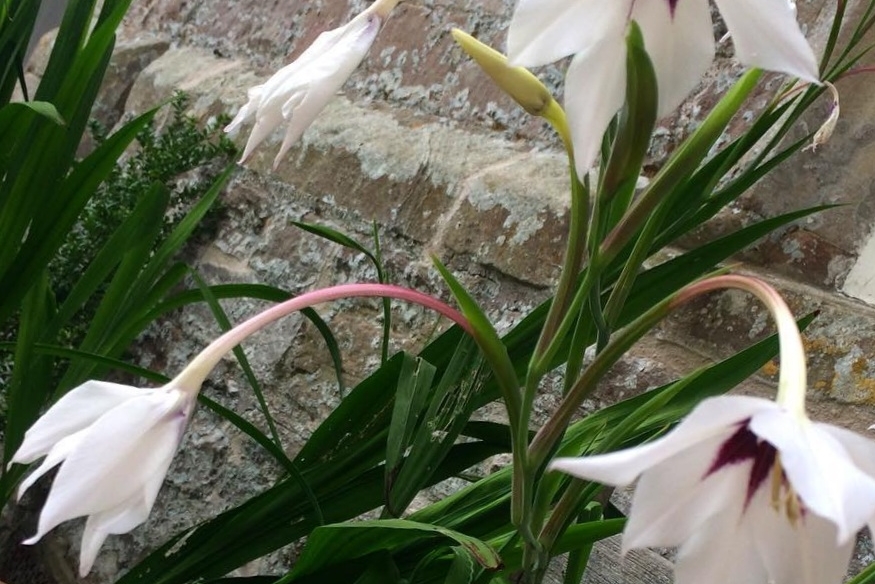
Acidanthera murielae - Peacock Lilies
Acidanthera murielae - Peacock Lilies
News posted: 1 April 2023 Post by: Alex
Time to read: ~ minutes, give or take.
All gardeners know that, although we are enjoying the spring and all the lovely new growth around us, we also need to be thinking ahead a few months to extend the flowering season beyond the height of summer. One of my favourite flowers for late summer is. They are also known by other names that you may be familiar with, notably Abyssinian gladiolus, Gladiolus murielae, callianthus, sword lily or peacock lily. This last name, I think, describes them beautifully; their graceful, fresh, white trumpet flowers nod about on tall stems above sword-like leaves commanding our attention, and as we edge closer to appreciate the delicate deep purple markings at the base of each funnel, we are rewarded with a wonderful floral perfume. So not only will you have lots of admiring visitors, but they also attract a wide range of insects for their nectar and pollen.
Acidanthera are in the gladioli family and grow from corms. They originate from east Africa and can withstand temperatures as low as -5°C, but it is best to plant them outside in late spring when the ground has warmed up and the threat of frost has passed. They look fantastic planted in drifts and are ideal for prairie style planting and cutting gardens (their flowers last well once they have been cut). They like a sheltered, sunny position in moist but well drained soil, and don’t worry, it can take a while before you see any foliage. The roots develop first below the ground and then the leaves will quickly emerge. They flower about three months after planting, perfect for the mid- August lull when there is a pause in summer colour.
This also makes Acidanthera ideal for planting in pots to be moved into position as they come into bloom and be placed by a door or seating area to get the maximum impact from their scent - the bigger the pot the better to create lots of drama! Another advantage of pots is that they can be arranged to fill any gaps in mixed cottage style borders that might have appeared over the summer.
Acidanthera are really easy to grow and care for. As with all bulb-like plants, the bigger the bulb or corm, the more nutrients and energy it will have stored up and the better the flowers. So, choose the biggest you can, inspect them carefully and reject any with signs of pests, damage or disease (in particular, soft tissue or mould).
If you are planting them in the garden, space 10cm apart and 15cm deep so they won’t need staking. If you are planting in pots, then they can be a bit closer but not touching. I aim to put 10 in a large 10 litre tub. They just need to be watered-in well and not allowed to dry out. A liquid plant food can be applied once a week when the leaves start growing to encourage flowering. Once they have flowered, the dead-heads should be removed, but the striking grass-like foliage looks good up until the first frosts. After that, cut them down and mulch or lift them.
Sadly, having put on such a spectacular flowering show, Acidanthera don’t seem to flower so well in the second year as they need time to replenish their reserves in the corms. I therefore prefer to replace the corms every year to guarantee a beautiful display. They aren’t expensive - you can buy 100 corms for less than £20, so split it with a friend if you think it’s too many or just enjoy armfuls a delicious flower for a few weeks!
Happy gardening!